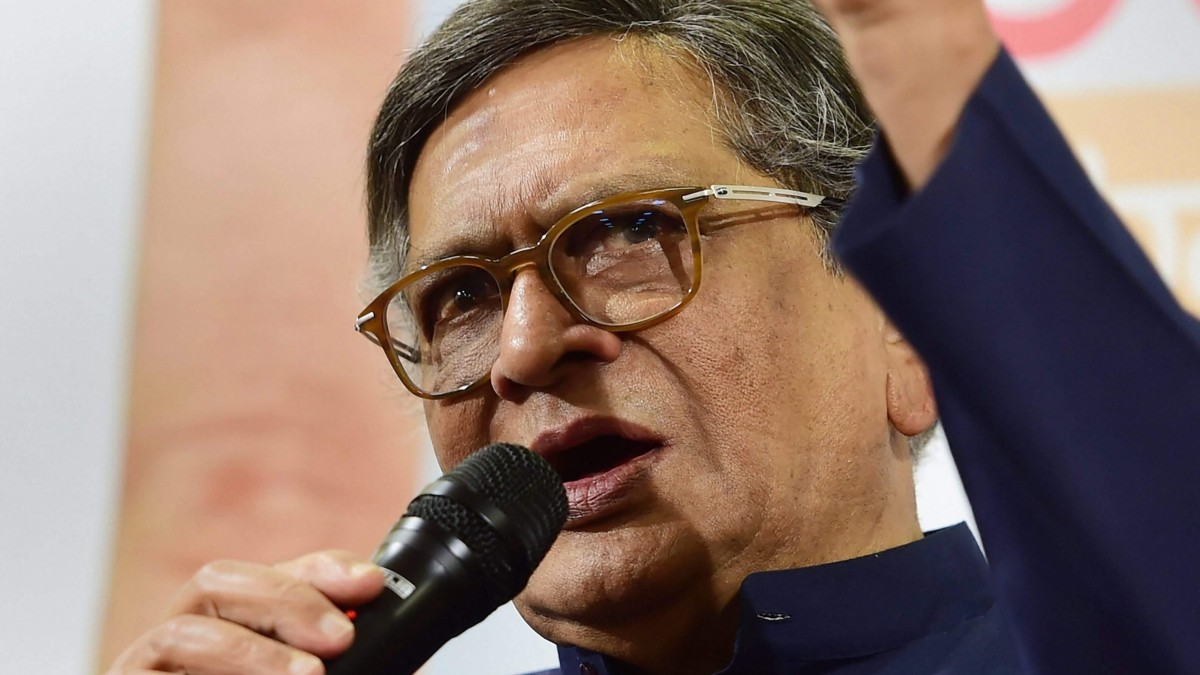Former Karnataka Chief Minister SM Krishna passed away at his residence early Tuesday (December 10) morning.
The 92-year-old veteran politician was ailing for quite some time, his family told PTI.
“SM Krishna is no more. He breathed his last at 2.45 am at his residence. Mortal remains are likely to be taken to Maddur today,” the news agency reported.
His last rites will be conducted with full state honours, and no functions or celebrations will be held during this period.
The Karnataka government has declared a holiday for Wednesday and said that the state will observe three days of mourning. Flags will be flown at half-mast at high government offices as a sign of respect.
Krishna, a former minister of external affairs, is recognised for having transformed Bengaluru into India’s Silicon Valley.
He has left a lasting legacy of public service and leadership.
SM Krishna’s early life
Somanahalli Mallaiah Krishna was the son of late SC Malliah.
He was born on May 1, 1932, in Somanahalli village in Mandya’s Maddur taluka in Karnataka.
An alumni of Maharaja’s College in Mysore, he earned a law degree from Bengaluru’s Government Law College.
Krishna also attended Southern Methodist University in Dallas and George Washington University in the US.
After returning to India, he worked as an International Law professor at Bengaluru’s Renukacharya Law College.
His political journey
SM Krishna’s political career began in 1962 when he was elected to the Karnataka Legislative Assembly.
He represented Lok Sabha after entering the Indian Parliament in 1968.
He was re-elected to the fifth Lok Sabha, but in 1972 he turned his attention to state politics, holding the position of Minister of Commerce, Industries, and Parliamentary Affairs for Karnataka until 1977.
He returned to the Lok Sabha in 1980 and held the positions of Minister of State for Industry (1983–84) and Finance (1984–85).
He served as Speaker of the Karnataka Legislative Assembly from 1989 to 1992.
He was elected to the Rajya Sabha in 1996, where he remained till 1999.
Krishna represented India abroad, serving on a United Nations delegation in 1982 and attending the Commonwealth Parliamentary Seminar in 1990.
From October 1999 to May 2004, he served as the 16th chief minister of Karnataka.
He was named governor of Maharashtra that same year and held the position until 2008. He was instrumental in approving the controversial ban on dance bars during his tenure, handling Maharashtra’s political difficulties with his usual poise, according to The Hindu.
He was India’s External Affairs Minister from 2009 to 2012 while Prime Minister Manmohan Singh’s UPA government was in power.
Krishna was initially associated with the Praja Socialist Party before he joined the Congress.
At the age of 84, nearly five decades later, Krishna left the grand-old party in 2017 and joined the BJP , claiming dissatisfaction with the Congress’s direction. Despite keeping a low profile following the switch, he took part in the 2019 election campaign.
After more than 60 years of public service, Krishna announced his retirement from active politics in January 2023.
In recognition of his contributions to the sphere of public affairs, he was awarded the Padma Vibhushan at Rashtrapati Bhavan in New Delhi that same year.
‘Brand Bengaluru’
Although Krishna has played multiple roles in Indian politics, he is best known for his vision for “Brand Bengaluru.”
He gained international prominence for his corporate-style administration and emphasis on public-private partnerships in Karnataka.
In 1999, his government formed the Bangalore Agenda Task Force (BATF), which comprised prominent figures from the business such as Azim Premji from Wipro and Nandan Nilekani from Infosys.
The initiative aimed at drafting a strategy plan for Bengaluru’s growth as a centre for IT.
Bengaluru became a viable alternative to California’s Silicon Valley under his direction.
His proactive strategy established Bengaluru as a global centre for innovation and technology while also creating a large number of jobs.
Krishna remained committed to the city’s future even after he left active politics.
He expressed concerns about upholding “Brand Bengaluru” in the face of obstacles like urbanisation and the strain on the infrastructure.
In a letter to then-Chief Minister Basavaraj Bommai in 2022, Krishna urged action to protect “Brand Bengaluru” and proposed reviving the BATF to draft a development plan for the city.
With inputs from PTI
)